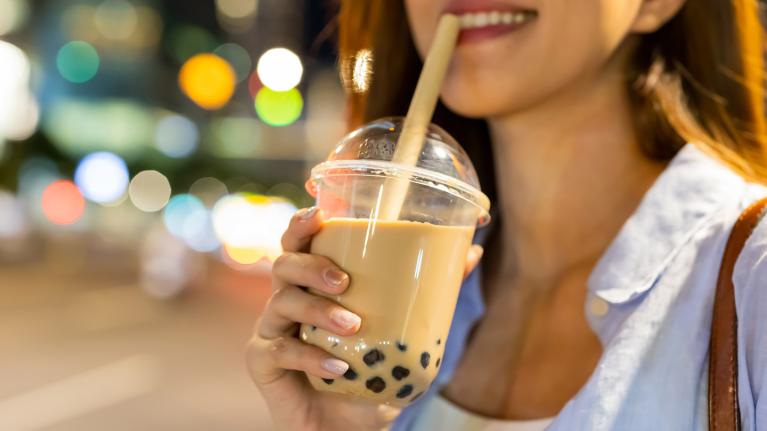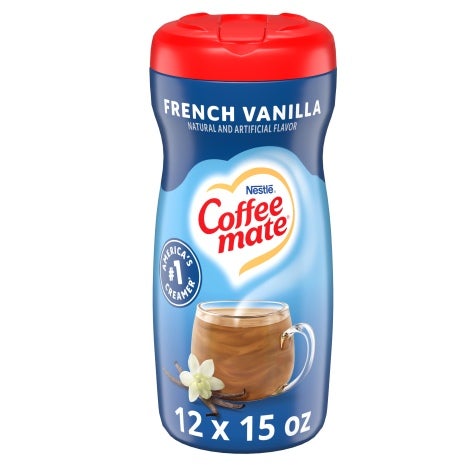
Discover International Beverages Your Patrons Will Love
International beverages enhance the depth of menus, satisfy patrons' search for adventure, and create positive connections through global flavors.
Customers are always on the lookout for a discovery to share with friends or on social media. International beverages from faraway lands and cultures are perfect for this as 40% of people are more willing to visit a restaurant offering new/innovative flavors.1
International beverages can be even more exciting, especially to younger guests. 43% of Gen Z, and 44% of Millennials, agree with the statement: “I’m ordering more beverages with unique flavors now than I was a year ago.”1 Global beverages can add an interesting spin to a college cafeteria menu, or that of any operation where younger customers frequent.
But in general, introducing beverage specialties from other cultures can help set a beverage menu apart from the competition. Global flavors can help to boost trial and sales and even support premium pricing.
Here are some popular and up-and-coming international beverages that will add that global touch to your menu.
Africa
The Chapman. This popular drink stems from Nigeria and is described as an African-inspired spin on sangria. It is made with ice, orange soda, lemon-lime soda, slices of cucumber and lemon, grenadine or blackcurrant, and bitters. It’s also not uncommon for bartenders in Nigeria to add rum or vodka.
Middle East
Tahini. A Middle Eastern condiment made from toasted ground hulled sesame seeds, served by itself or as a major ingredient in hummus and baba ghanoush. The addition of tahini adds nutty, earthy complexity to hot, iced, and frozen beverages.
Latin America
Aguas Frescas. These combine fruit juices, cereals, flowers, or seeds blended with sugar and water. They make for light and refreshing nonalcoholic international beverages.
Cafézinho. A traditional beverage of welcome in Brazilian culture, it is made by boiling water with sugar, then adding ground espresso. The resulting mixture is then poured through a coffee filter and served like espresso.
Licuado (or batidos). Ubiquitous throughout Latin America, these colorful blended beverages are similar to smoothies. They’re made with fruit juice diluted with milk or water, then blended with ice. Popular varieties include melon, pineapple, hibiscus, tangerine, and papaya.
Tereré. Paraguayans have been making ice-cold yerba mate-based drinks since pre-Columbian times. Tereré, pronounced tay-ray-ray, mixes yerba mate leaves with ice-cold water in a large vessel or pitcher. This creates a refreshing, low-calorie beverage to enjoy socially.
Asia/Pacific
Cà Phê Trứng (or Vietnamese egg coffee). Vietnamese Coffee is brewed strong and flavored with sweetened condensed milk. For a unique spin, serve it with an egg yolk to turn it into a cà phê trứng.
Matcha Pandan Latte. Pandan is a vibrantly green tropical plant with an aromatic flavoring. Pandan syrup adds a sweet, tropical vanilla-like global flavor to the matcha green tea.
Yuzushu.This simple-to-prepare Japanese beverage is for those who prefer a more sour citrus profile. It is made from yuzu, a popular Japanese citrus fruit similar to a lemon. Yuzushu balances a tangy and tart taste that is said to go well with sashimi or other seafoods. It is described as light and refreshing.
Tibetan Butter Tea (po cha). In the cold high-altitude climate of Tibet, locals add a special ingredient to their tea: yak butter. This gives it a rich flavor and caloric punch to fuel them through the day. While it may be new to most U.S. consumers, this can appeal as a functional international beverage.
Ipoh White Coffee. This unique beverage is often considered one of the best coffees in Asia, and it all comes down to the roasting. The coffee is named after the capital city of the Malaysian state of Perak and is so famous for its white coffee that many travelers go out of their way just to visit the city and try the beverage.
Bajigur Coffee. Coconut and ginger come together with the global flavors of pandan and palm sugar in Indonesia’s bajigur coffee. It’s a sweet beverage sold by street cart vendors in the freezing Javanese highlands.
Jamu. Indonesian jamu is an eye-catching drink made with plenty of functional ingredients. At its simplest, jamu is made from fresh turmeric root (which gives it a bright orange color), ginger, lime juice, and honey. One common option includes coconut milk and warming spices like cinnamon and cloves.
Europe
Uzvar. Uzvar (which also goes by the names compote, kompote, or kompot) is a Ukrainian drink. It’s made from dried fruits like apples, pears, or plums, honey, and spices like cinnamon, nutmeg, and star anise. To make the drink, all the dried fruits are put in a pot of water that’s brought to a boil. The drink is then simmered and set aside overnight to be served cold or at room temperature the next day.
Bicerin. This decadent, dessert-like coffee drink hails from Turin, Italy. It consists of espresso, hot chocolate, and whipped milk or cream.
Caffè Shakerato. Also hailing from Italy, this caffeinated refresher consists of freshly made espresso, simple syrup, and lots of ice. It’s shaken vigorously until a froth forms,and usually strained into a martini or other stemmed glass.
Sources: 1. Technomic 2023 Flavor Consumer Trend Report, as cited in Technomic Journey to 2030 Forecasting the Future of Foodservice (2024)
The information provided is based on a general industry overview, and is not specific to your business operation. Each business is unique and decisions related to your business should be made after consultation with appropriate experts




